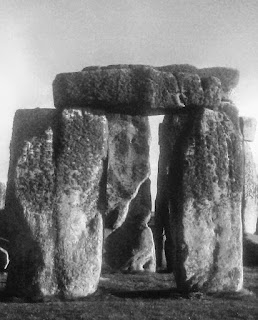As far as we can tell, the ring being incomplete, the ring seems to be marked into three equal portions by "entrances". The well known one on the solstitial alignment; by stone 11 it being noticeably thinner than average and only half height, the stone having been broken; and by stone 21. Stones 21 and 22 form the posts of the accidental trilithon nearest the path.
Click to embiggen - Stones 21, 22, 122
From the paper: Plot showing the spacing and size of stones forming the Sarsen Circle (figure by T. Darvill).
Having spent hundreds of hours standing near it I became convinced that it was an entrance because of the width of the gap and the dressing of the stones. The lintel has a false keystone appearance and the uprights maybe vertical grooves.
However it would have been the trilithon of the fallen 20 and 21 that would have been either side of the theoretical Darvillian gap that would mark one of the three divisions of the circle. So this isn't the trilithon we should be looking at.
https://www.academia.edu/12401342/The_Twisted_Trilithon_of_Stonehenge_Corrected_Version
Not a solution to Stonehenge but another intriguing nugget that may help build a more complete understanding.



No comments:
Post a Comment
Comments welcome on fresh posts - you just need a Google account to do so.